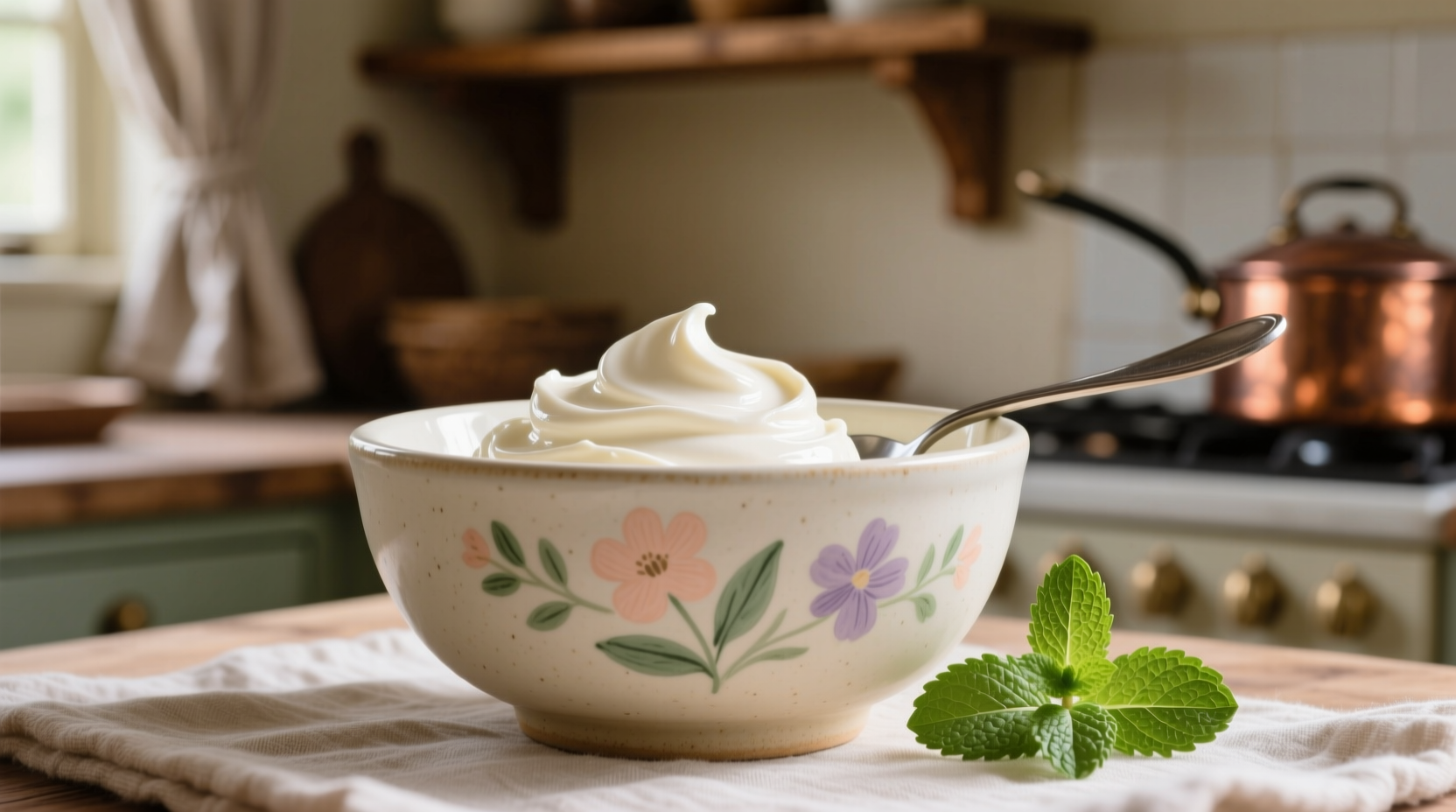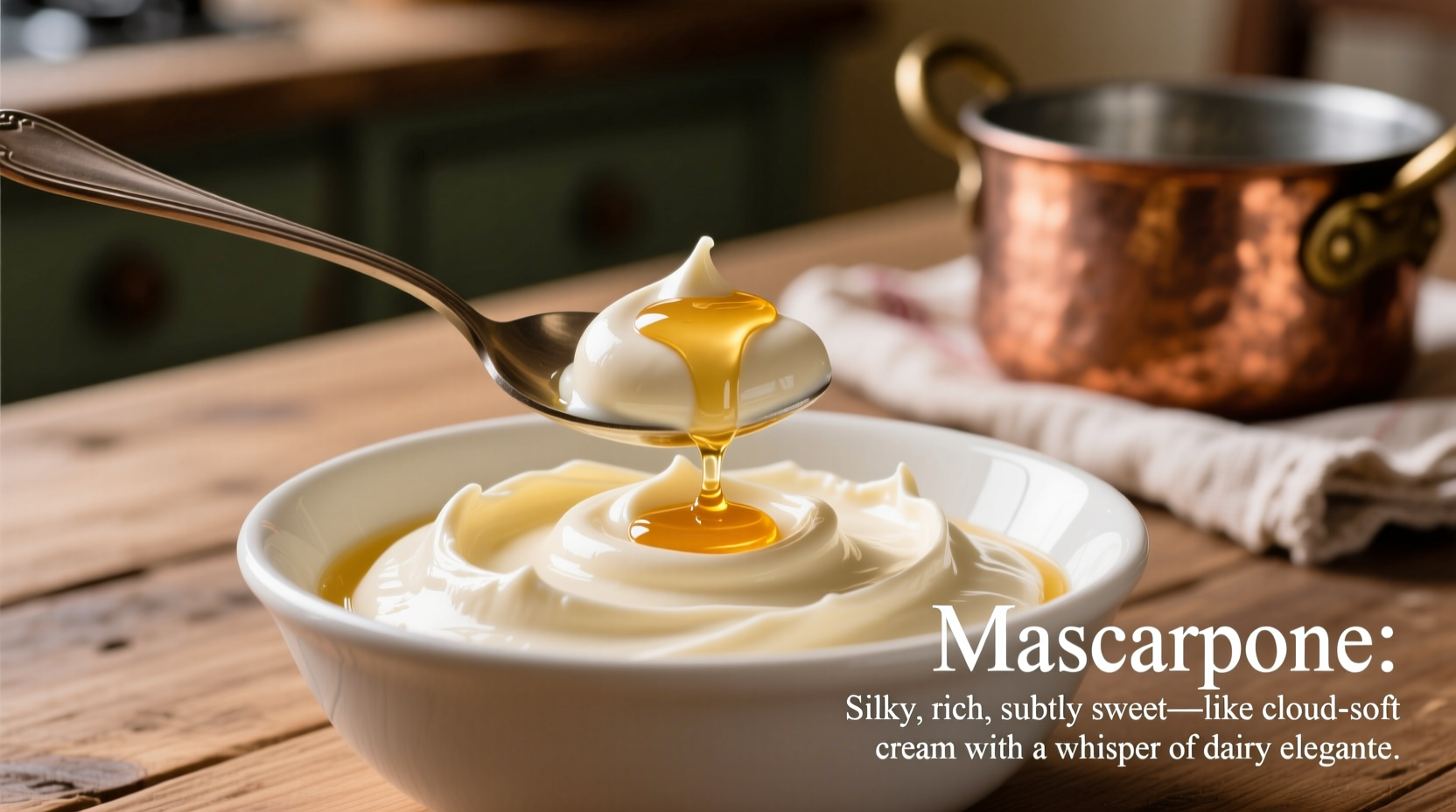Curious about what mascarpone tastes like before trying it in your next tiramisu or sauce? You're not alone. This Italian cream cheese has become a staple in kitchens worldwide, yet many home cooks remain uncertain about its distinctive flavor profile. In this comprehensive guide, you'll discover exactly what to expect when tasting mascarpone, how it compares to similar dairy products, and why professional chefs prize it for its unique culinary properties.
First Impressions: The Flavor Profile of Mascarpone
When you take your first spoonful of mascarpone, you'll notice an immediate richness that coats your palate. The dominant flavor is buttery with subtle sweetness—think of fresh butter blended with heavy cream. Unlike traditional cheeses, mascarpone lacks the sharp tang of cream cheese or the pronounced saltiness of ricotta. Its pH level sits around 4.6, making it only mildly acidic compared to cream cheese's more pronounced tang at pH 4.3.
The subtle sweetness comes naturally from the high butterfat content (typically 75% minimum), not added sugar. This delicate balance makes mascarpone incredibly versatile—it enhances desserts without overpowering them and adds richness to savory dishes without competing with other flavors.
Texture and Mouthfeel: More Than Just Taste
Understanding what mascarpone tastes like requires considering its luxurious texture. It has a smooth, velvety consistency that melts at room temperature, creating what chefs call a "mouth-coating" effect. This isn't just poetic description—mascarpone's fat molecules are larger than those in regular cream cheese, creating that signature silkiness that's difficult to replicate with substitutes.
When properly made, mascarpone should feel almost weightless on the tongue despite its richness. Any graininess indicates poor quality or improper storage. The ideal mascarpone spreads easily but maintains structure, making it perfect for layering in desserts or folding into sauces.
Mascarpone vs. Similar Cheeses: The Critical Differences
| Cheese Type | Flavor Profile | Texture | Fat Content | Best Culinary Uses |
|---|---|---|---|---|
| Mascarpone | Mild, slightly sweet, buttery, subtle tang | Ultra-smooth, velvety, spreads easily | 75% minimum | Tiramisu, fruit dips, creamy sauces, cheesecake |
| Cream Cheese | Noticeable tang, slightly salty, less sweet | Denser, more structured, slightly grainy | 33% minimum | Frostings, bagels, dips, cheesecake |
| Ricotta | Milky, slightly sweet, more pronounced dairy flavor | Grainy, moist, less cohesive | 13% minimum | Lasagna, cannoli, pancakes, savory tarts |
| Philadelphia-Style | Stronger tang, more acidic, less buttery | Firmer, holds shape better | 33% minimum | Baking, spreads, dips |
This comparison reveals why substituting mascarpone isn't always successful. While cream cheese brings necessary tang to cheesecake, mascarpone's higher fat content and milder flavor create the signature texture in authentic tiramisu. Ricotta's graininess works beautifully in cannoli but would ruin the smooth layers of a properly made tiramisu.
How Temperature Affects Mascarpone's Flavor
Mascarpone's taste profile changes significantly with temperature—a crucial detail often overlooked. Straight from the refrigerator, it tastes more neutral with restrained flavors. At room temperature (about 20 minutes out of the fridge), its buttery notes become more pronounced and the subtle sweetness emerges.
When heated gently (below 140°F/60°C), mascarpone maintains its creamy texture and enhances sauces beautifully. But exceeding this temperature causes separation—a critical limitation for home cooks to understand. Unlike cream cheese, mascarpone cannot withstand high-heat cooking without breaking down, which fundamentally alters both texture and flavor perception.
Culinary Applications: Sweet Versus Savory
One of mascarpone's most remarkable qualities is its adaptability across flavor profiles. In sweet applications:
- It enhances fruit flavors without competing with them
- Creates exceptionally smooth mousses and parfaits
- Provides richness to frostings without excessive sweetness
In savory dishes, chefs use it to:
- Add creaminess to pasta sauces without heaviness
- Balance acidity in tomato-based dishes
- Create luxurious salad dressings
According to culinary research from the University of Gastronomic Sciences in Pollenzo, Italy, mascarpone's neutral pH and high fat content make it particularly effective at carrying and balancing other flavors—explaining its centuries-long use in both dessert and main course preparations throughout Lombardy.
Storage Tips to Maintain Flavor Integrity
Mascarpone's delicate flavor profile is easily compromised by improper storage. Unlike aged cheeses, it's meant to be consumed fresh. When stored properly in its original container with the lid tightly sealed:
- Refrigerated: 4-7 days maximum for optimal flavor
- Freezing: Not recommended as it alters texture permanently
- After opening: Consume within 3 days for best quality
Notice any sourness or separation? That's your signal the delicate balance has been disrupted. Properly stored mascarpone should never develop strong acidic notes—that indicates spoilage rather than its natural flavor profile.
Perfect Pairings: What Complements Mascarpone's Flavor
Understanding what mascarpone tastes like helps identify ideal pairings. Its mild sweetness and buttery richness shine when combined with:
- Fruits: Berries, stone fruits, and citrus cut through the richness
- Coffee: The bitterness balances mascarpone's sweetness in tiramisu
- Alcohol: Marsala wine enhances its complexity in traditional recipes
- Spices: Vanilla, cinnamon, and nutmeg complement without overwhelming
For savory applications, try it with:
- Truffle: The earthiness contrasts beautifully with mascarpone's richness
- Lemon zest: Brightens pasta sauces and risottos
- Herbs: Chives or tarragon add complexity to spreads

Common Misconceptions About Mascarpone
Several myths persist about this versatile cheese:
- "Mascarpone is just sweetened cream cheese" - False. It contains no added sugar and has a completely different production process using cream and citric acid rather than bacterial culture.
- "It's a type of ricotta" - Incorrect. Ricotta is made from whey; mascarpone from cream.
- "All mascarpone tastes the same" - Not true. Regional variations exist, with Lombardy-produced mascarpone having a slightly more complex flavor profile due to traditional production methods.
According to Italy's Ministry of Agricultural, Food and Forestry Policies, authentic mascarpone must be produced using specific methods outlined in traditional recipes dating back to the 16th century—explaining why artisanal versions often have more nuanced flavors than mass-produced alternatives.
Final Thoughts: What to Expect When Tasting Mascarpone
When tasting mascarpone for the first time, expect a luxurious experience that's more about texture than bold flavors. Its genius lies in what it doesn't do—it doesn't overpower, doesn't compete, but rather enhances and balances other ingredients. Whether you're making classic Italian desserts or experimenting with modern fusion cuisine, understanding what mascarpone tastes like helps you leverage its unique properties to elevate your dishes.











 浙公网安备
33010002000092号
浙公网安备
33010002000092号 浙B2-20120091-4
浙B2-20120091-4